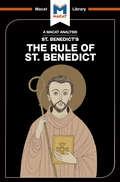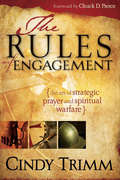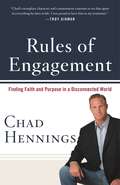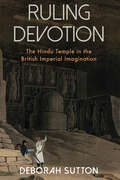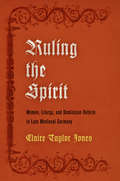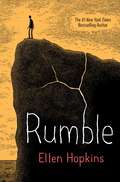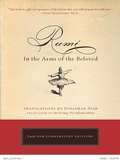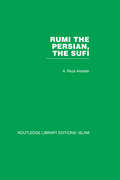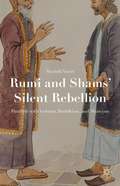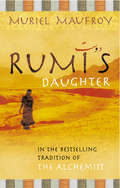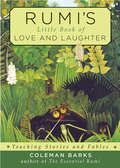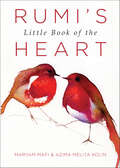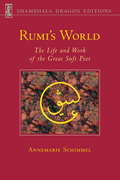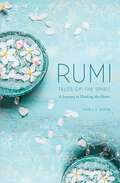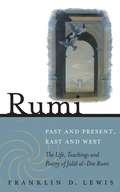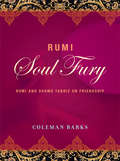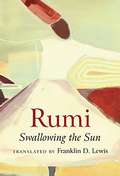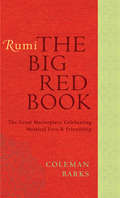- Table View
- List View
Rule of St Benedict
by Benjamin LairdThe Rule of St Benedict, written around 1500 years ago by the Italian monk St Benedict of Nursia, is a slim handbook for monastic life – a subject many modern readers would regard as relatively niche. It is, however, also a model of the organized and clearly expressed thought produced by good reasoning skills – a mainstay of critical thinking. Reasoning is all about making a good case for something, through logical arguments, neatly and systematically organised. In Benedict’s case, his main concern was to lay out a set of rules and practices that would allow monasteries to run as well-organised communities. Communal living presented huge challenges, and yet it was also, Benedict believed, the best way for monks to sustain themselves, their religion, and the learning and teaching that went with it. His Rule laid out concise but detailed chapters on the best way to achieve this, including provisions for all areas of personal and communal discipline, right down to how tasks might be allotted to individual monks. Providing a complete roadmap for successfully running a community, the concise brilliance of The Rule has even been suggested by some business professors as useful model for running small businesses today.
Ruled Reading and Biblical Criticism (Journal of Theological Interpretation Supplements)
by Matthew T. BellIn Ruled Reading and Biblical Criticism, Matthew T. Bell contends that the gulf in interpretive priorities between ancient and modern readers has been exaggerated and that careful study of early Christian reading practices suggests that it is both possible and productive to recontextualize early Christian “ruled reading” for a postmodern setting.Modern prejudice holds that ancient Christian interpretation was relatively unconcerned with history and concomitantly determined to foist extrascriptural doctrinal commitments onto scripture, silencing those layers of scripture’s meaning that modern criticism has been most concerned with uncovering. In this book, Bell argues that, when the ethos and theology of reading in the early Church are taken into account, premodern interpretive priorities turn out to be less implausible than the modern world has believed them to be. Through close reading of ancient Christian texts, Bell outlines an ontology of scripture wherein the relationship between early Christianity’s “Rule of Faith,” on one hand, and its scriptures, on the other, was expressly constructed as a hermeneutical spiral, the slant of which was designed to attend to and be edified by textually mediated conundrums and intellectual provocations. Viewed along that spiral, the Church’s Rule was as “scriptural” as the Church’s catalog of scriptures was “ruled.” This book will be welcomed by academics who study early Christianity and scripture, as well as scholars interested in reconsidering Christian hermeneutical questions for a postmodern age.
Rules Of Engagement: The Art of Strategic Prayer and Spiritual Warfare (Rules Of Engagement Ser.)
by Cindy TrimmBeat the devil at his own game and wage warfare with confidence!There is a spiritual battle going on, and prayer warrior and intercessor Cindy Trimm has given you a manual to wage effective warfare. The Rules of Engagement helps you recognize the spirits that operate in the kingdom of darkness and gives you declarations for engaging them armed with God&’s power and authority.
Rules and Regulations of Brahmanical Asceticism: Continuous Improvement Theory In High Performance Organizations (SUNY series in Religious Studies)
by Patrick OlivelleRules and Regulations of Brahmanical Asceticism is the critical edition and translation of a twelfth-century Sanskrit text written by Yadava Prakasaa, whose life and activities are of historical interest because, according to tradition, he was the teacher of the great Vais'n'ava theologian Ramanuja.This text is the oldest and most comprehensive example of medieval Sanskrit literature devoted to examining the duties of ascetics. Yadava Prakasaa is the only one who explicitly examines the thorny question of whether asceticism is a legitimate way of life for Brahmins. His topics include the people qualified to become ascetics; the rite for becoming an ascetic; the clothes and belongings of an ascetic; techniques of meditation; daily routines such as bathing, divine worship, and begging; proper conduct and etiquette; the manner of wandering; residence during the rains; expiatory penances; and the funeral.In his introduction, Patrick Olivelle examines the place of Yadava's text within the literary and institutional history of Brahman'ical asceticism. He discusses the origins of asceticism in India; its incorporation into the Brahman'ical mainstream; and its variations within Hindu sects, as well as in Buddhist and Jain traditions.
Rules of Engagement: Finding Faith and Purpose in a Disconnected World
by Chad HenningsIn all of the roles Chad Hennings has been privileged to play in life he has seen that the persistent "go-it-alone" myth in our society traps men from connecting in a meaningful way with other men. In fact, men in our society are emotionally disconnected from each other and from God.In this book Chad wants to share the lessons he has learned that will make a difference in men's lives and tear down the walls that separate men from each other and their true selves.This book will offer men a plan for a new approach to life that stresses: Crafting character and vision for ones self Healing the troubled past Developing a work ethic Commiting to self-care Finding fulfillment Living with spirituality Making a strategic life plan Serving the family Male bonding Developing an understanding of money Community service Redefining success
Ruling Devotion: The Hindu Temple in the British Imperial Imagination (SUNY series, Studies in the Long Nineteenth Century)
by Deborah SuttonCombines historical, literary, art historical, and archaeological perspectives to explore the idea of the Hindu temple in the British colonial imagination.A History Today's 2024 Book of the YearFrom 1800 onwards, the Hindu temple occupied a fragile and uneasy proximity to Imperial governance in India. The colonial state sought to regulate and extract the wealth of large temples. Imperial scholars classified the extraordinary diversity of architectural forms from across India, and selected temples were defined as monuments and brought into the custody of Imperial archaeology. Over time, the Imperial literary imagination transformed the Hindu temple from a place of worship and devotion into a space of wealth, sensuality, and violence. However, the Hindu temple also tested the Imperial state. Devotees and trustees manipulated and rejected attempts at governance, and the Hindu temple became a site at which the authority of the state was persistently modified or curtailed. Ruling Devotion combines historical, literary, art historical, and archaeological perspectives to explore the idea of the temple in particular localities, through the formation of pan-British-Indian policy and in the broadest of transnational realms of Imperial culture. Drawing on a huge range and diversity of archival materials, the book explores the preoccupations and frailties of the colonial state in India.
Ruling the Spirit: Women, Liturgy, and Dominican Reform in Late Medieval Germany (The Middle Ages Series)
by Claire Taylor JonesHistories of the German Dominican order have long presented a grand narrative of its origin, fall, and renewal: a Golden Age at the order's founding in the thirteenth century, a decline of Dominican learning and spirituality in the fourteenth, and a vibrant renewal of monastic devotion by Dominican "Observants" in the fifteenth. Dominican nuns are presumed to have moved through a parallel arc, losing their high level of literacy in Latin over the course of the fourteenth century. However, unlike the male Dominican friars, the nuns are thought never to have regained their Latinity, instead channeling their spiritual renewal into mystical experiences and vernacular devotional literature. In Ruling the Spirit, Claire Taylor Jones revises this conventional narrative by arguing for a continuous history of the nuns' liturgical piety. Dominican women did not lose their piety and literacy in the fifteenth century, as is commonly believed, but instead were urged to reframe their devotion around the observance of the Divine Office.Jones grounds her research in the fifteenth-century liturgical library of St. Katherine's in Nuremberg, which was reformed to Observance in 1428 and grew to be one of the most significant convents in Germany, not least for its library. Many of the manuscripts owned by the convent are didactic texts, written by friars for Dominican sisters from the fourteenth through the fifteenth century. With remarkable continuity across genres and centuries, this literature urges the Dominican nuns to resume enclosure in their convents and the strict observance of the Divine Office, and posits ecstatic experience as an incentive for such devotion. Jones thus rereads the "sisterbooks," vernacular narratives of Dominican women, long interpreted as evidence of mystical hysteria, as encouragement for nuns to maintain obedience to liturgical practice. She concludes that Observant friars viewed the Divine Office as the means by which Observant women would define their communities, reform the terms of Observant devotion, and carry the order into the future.
Rumble
by Ellen HopkinsCan an atheist be saved? The New York Times bestselling author of Crank and Tricks explores the highly charged landscapes of faith and forgiveness with brilliant sensitivity and emotional resonance."There is no God, no benevolent ruler of the earth, no omnipotent grand poobah of countless universes. Because if there was...my little brother would still be fishing or playing basketball instead of fertilizing cemetery vegetation." Matthew Turner doesn't have faith in anything. Not in family--his is a shambles after his younger brother was bullied into suicide. Not in so-called friends who turn their backs when things get tough. Not in some all-powerful creator who lets too much bad stuff happen. And certainly not in some "It Gets Better" psychobabble. No matter what his girlfriend Hayden says about faith and forgiveness, there's no way Matt's letting go of blame. He's decided to "live large and go out with a huge bang," and whatever happens happens. But when a horrific event plunges Matt into a dark, silent place, he hears a rumble...a rumble that wakes him up, calling everything he's ever disbelieved into question.
Rumi
by Cihan OkuyucuAn authoritative but accessible introduction to this important 13th-century historian and mystic poet Rumi, this work concentrates on the social and cultural environment in which he lived and produced his influential works. The book describes the war-torn lives of the people in Asia Minor at the time and states that few figures in history have made an appeal for peace so enlightened that it traveled down the centuries. A selection of passages from Rumi''s works is also included, explaining his core philosophy in his own words.
Rumi
by Jonathan StarLandmark translations of the Sufi poet/mystic Rumi from the acclaimed interpreter of the Tao Te Ching. Jonathan Star has assembled selections of Rumi?s verse in a treasury that spans the poet?s life and includes his most celebrated and poignant work. It is an enchanting volume of classic Eastern thought that creates an exhilarating experience for all readers. .
Rumi And His Sufi Path Of Love
by Faith CitlakThis collection of articles by artists, philosophers, psychologists, and social scientists explores the Sufi tradition and its best-known teacher, Rumi, a 13th-century poet, jurist, and philosopher. Setting aside the standard account of Rumi as a poet of mystic love, these contributors view his writings in a historical context, investigating Sufism''s ties to Islam and the teachings of the Prophet Mohammad and tracing Rumi''s influence on Persian and Turkish literature. The reasons why Sufism has transcended national boundaries and sectarian strife so successfully are also debated, and several contributors recommend the Sufi message of faith, love, and tolerance as a useful common ground for dialogue between religious groups.
Rumi The Persian, The Sufi
by A. Reza ArastehOriginally published in 1965. This volume presents a systematic study of Rumi’s rebirth into a total being. By studying the elements of Persian culture, as well as the unique writings of Rumi, the author reveals the characteristics of maturity, the qualities of final integration in identity, health, and happiness that underlie Rumi’s life and work.
Rumi and Shams’ Silent Rebellion: Parallels with Vedanta, Buddhism, and Shaivism
by Mostafa VaziriThis book offers a paradigm shift and fresh interpretation of Rumi's message. After being disentangled from the anachronistic connection with the Mevlevi order of Islamic Sufism, Rumi is placed in the world of philosophy. A pyramidal model is proposed for the structure of Rumi's philosophy, covering the range of topics from the basics of human existence to the principle of an immutable truth beyond time and space. The book also aims to demonstrate the silent yet defiant rebellion of Rumi and Shams. Mostafa Vaziri discusses how the two figures challenged the unbending Islamic dogma and a prejudiced mindset toward non-Muslims, with the intent of fostering an inclusive universalist attitude. By taking a more inclusive look at thousands of verses, from sources including Rumi's Divan and Masnavi, Sultan Valad's poetry, and the Maqalat (Discourses of Shams), a much broader picture of Rumi as a practical and sober philosopher begins to emerge. In his deeper philosophical approach, Rumi proposes contemplation of the non-self, namelessness, placelessness, timelessness, silence, the practice of dance and music, and the use of visualization techniques. Vaziri shows how these notions and practices, as described in Rumi's writings, reveal elements in common with those of advaita Vedanta, Buddhism, and Kashmir Shaivism. This book aims to expand the perception of Rumi, placing him at the level of intercultural philosopher and universal thinker outside of any religious tradition.
Rumi's Daughter
by Muriel MaufroyRumi is now acknowledged as one of the great mystical poets of the Western world, with huge sales of the many collections of his poetry. Not much is known about his life except that he lived in thirteenth-century Anatolia (now Turkey), had a great spiritual friendship with a wild man called Shams, brought an adopted daughter into his family, and was distraught when Shams finally disappeared. Rumi's Daughter is the delightful novel about Kimya, the girl who was sent from her rural village to live in Rumi's home. She already had mystical tendencies, and learned a great deal under Rumi's tutelage. Eventually she married Shams, an unusual husband, almost totally absorbed by his longings for God. Their marriage was fiery and different and, in the end, dissolved by Kimya's death - after which Shams vanished. Rumi's Daughter tells Kimya's story with great charm and tenderness. Well written and thought-provoking, it is sure to draw comparison with Paolho Coelho's The Alchemist, and also to add something fresh and new to what is so far known about Rumi.
Rumi's Little Book of Love and Laughter: Teaching Stories and Fables
by Coleman BarksRowdy, ecstatic, and sometimes stern, these teaching stories and fables reveal new and very human properties in Rumi's vision. Included here are the notorious "Latin parts" that Reynold Nicholson felt were too unseemly to appear in English in his 1920s translation. For Rumi, anything that human beings do--however compulsive--affords a glimpse into the inner life.Here are more than 40 fables or teaching stories that deal with love, laughter, death, betrayal, and the soul. The stories are exuberant, earthy, and bursting with vitality--much like a painting by Hieronymus Bosch or Chaucer's Canterbury Tales. The characters are guilty, lecherous, tricky, ribald, and finally possessors of opened souls.Barks writes: "These teaching stories are a kind of scrimshaw--intricately carved, busy figures, confused and threatening, and weirdly funny.This is an entertaining collection from one of the greatest spiritual poets of all time, rendered by his most popular translator."The minute I heard my first love story, I started looking for you, not knowing how blind that was. Lovers don't finally meet somewhere. They're in each other all along."--Rumi
Rumi's Little Book of the Heart
by Maryam Mafi and Azima Melita KolinIn this slender volume, Rumi explores the joy of friendship and the agony of loss. These poetic meditations on the most profound of human relationships are like crystals: they sparkle with the many hues of the rainbow and contain worlds within, capturing us with their mystery.Here are poems that cause us to reflect on our own relationships, to experience again the intensity of friendship, the ache of loss, and the profundity of immersion.This is a book for poetry lovers, Rumi fans, and all gift-giving occasions; a book to treasure and to share.Previously published in hardcover as Whispers of the Beloved.Imitating others,I failed to find myselfI looked inside and discoveredI only knew my name.When I stepped outsideI found my real Self.Replaces ISBN 9781571746825.
Rumi's World: The Life and Works of the Greatest Sufi Poet
by Annemarie SchimmelThis book (previously published as I Am Wind, You Are Fire) celebrates the extraordinary career of Persia's great mystical poet, Rumi (1207-1273), through the story of his life, along with an enlightening examination of his ecstatic verse. Rumi lived the quiet life of a religious teacher in Anatolia until the age of thirty-seven, when he came under the influence of a whirling dervish, Shams Tabriz, and was moved to a state of mystical ecstasy. One of the results of this ecstasy was a prodigious output of poems about the search for the lost Divine Beloved, whom Rumi identified with Shams. To symbolize this search, Rumi also invented the famous whirling dance of the Melevi dervishes, which are performed accompanied by the chanting of Rumi's poems. Professor Schimmel illuminates the symbolism and significance of Rumi's vast output and offers her own translations of some of his most famous poems.
Rumi: A Daybook of Spiritual Guidance
by Camille Adams HelminskiThe spiritual influence of Jelaluddin Rumi (1207-1273) is increasing among people of diverse beliefs throughout the western world. Rumi is now recognized here in the West, as he has been for seven centuries in the Middle East and Western Asia, as one of the greatest literary and spiritual figures of all time. Rumi is a spokesman for the religion of love in the language of the heart. Recent translations of Rumi's work have brought forth a variety of different qualities, exploring the subtlety, grace, and electricity of his verse. This book presents his spiritual teachings concisely and comprehensively, in a translation that touches heart and mind. The Mathnawi, from which these selections have been taken, is one of the greatest spiritual masterpieces ever written. Its content includes the full spectrum of life on earth, as well as the vertical dimension to the highest levels of metaphysics and cosmic awareness.
Rumi: A Journey to Healing the Heart
by Kamla K KapurRetold in award-winning writer Kamla K. Kapur&’s elegant, flowing language, Rumi&’s tales of wisdom and humanity are given fresh life in this modern masterpiece.Rumi: Tales of the Spirit is a sweet, comforting, and at times, fiery guide to nourishing the spirit. In a hopeful but pragmatic tone, timeless storyteller Rumi and award-winning author and playwright Kamla Kapur guide us through the trials of life and teach us to embrace suffering, to pray even when it feels hopeless, and ultimately, to surrender to the cosmic will. In twelve fresh and powerful tales of wisdom, we learn to trust in ourselves and in the universe, experience joy in good times and bad, and find the strength to persevere through life&’s struggles. Kapur has been studying Rumi for twenty years. Through her detailed analysis of his life and work and her own understanding of the human condition and the present-day literary scene, Kapur brings new life to these centuries-old stories while staying true to their roots in Rumi&’s time and place. These retellings convey Rumi&’s deep insight on the human condition and bring to light the vast and subtle meanings of his stories that are often lost in translation. Through this work, we see that people around the world and across time have always been connected by the hopes, dreams, and inner struggles that make up the human experience. Personal, poignant, and woven with fierce passion for life and the divine, Rumi: Tales of the Spirit will leave you with heart-wrenching gratitude for life&’s trials and gifts.
Rumi: Bridge to the Soul
by Coleman Barks2007 is the "Year of Rumi," and who better than Coleman Barks, Rumi's unlikely, supremely passionate ambassador, to mark the milestone of this great poet's 800th birthday? Barks, who was recently awarded an honorary doctorate in Persian language and literature by the University of Tehran for his thirty years of translating Rumi, has collected and translated ninety new poems, most of them never published before in any form. The result is this beautiful edition titled Rumi: Bridge to the Soul. The "bridge" in the title is a reference to the Khajou Bridge in Isphahan, Iran, which Barks visited with Robert Bly in May of 2006--a trip that in many ways prompted this book. The "soul bridge" also suggests Rumi himself, who crosses cultures and religions and brings us all together to listen to his words, regardless of origin or creed. Open this book and let Rumi's poetry carry you into the interior silence and joy of the spirit, the place that unites conscious knowing with a deeper, more soulful understanding.
Rumi: Past and Present, East and West
by Franklin D. LewisThis long awaited paperback edition describes the key events in Rumi's magical life story: his unusual childhood, his relationship with his father, and his intense, though controversial, affection for a wandering dervish.
Rumi: Soul Fury
by Coleman BarksThis is how the heart sounds. Do not change the melody, this now, you and I, here together. Let this being with each other be heart-sound.The evocative, spiritual poetry of thirteenthcentury Sufi mystic Rumi has inspired people for centuries, and Coleman Barks' stunning translations are unparalleled. This exquisite new collection speaks to the mystery of soul friendship, specifi cally between Rumi and Shams Tabriz, and universally in the relationships we all share.Jelaluddin Rumi and Shams Tabriz met in 1244 and began a mystical, divine friendship, one not bound to time and space and despite their diff erences. Where Rumi was introspective, loving, and embodied peace and kindness, Shams was wild, brash, and honest--full of a fi ery passion Barks calls "soul fury." Together they shared an eternal friendship that resulted in Rumi's luminous quatrains and the wise Sayings of Shams Tabriz, giving language to the delight of true friendship.s their divine yearnings. Joyous and contemplative, provocative and playful, Rumi: Soul Fury is a sterling addition to the modern Rumi oeuvre, and is sure to be embraced by his wide and devoted readership.
Rumi: Swallowing the Sun
by Franklin Dean LewisTimeless and eternal, the poetry of Jalal al-Din Rumi is loved the world over, making him the best selling poet from America to Tajikistan. In this beautifully presented volume of new translations, Franklin D. Lewis draws from the great breadth of his work, in all its varied aspects and voices. Working directly from the original Persian, Lewis brings to this translation not only the latest scholarship in Persian and English, but a deftness and lightness of touch that allows for a profound sensitivity to Rumi's mystical and philosophical background.Complete with a detailed introduction and notes, this is a perceptive, insightful, and deeply moving collection that will prove inspirational to both keen followers of Rumi's work and readers discovering the great poet for the first time.
Rumi: The Big Red Book
by Coleman BarksConsidered one of the masterpieces of world literature, The Big Red Book is perhaps the greatest work of Rumi, the medieval Sufi mystic who also happens to be the bestselling poet in America. Rumi was born in 1207 to a long line of Islamic theologians and lawyers on the eastern edge of the Persian Empire in what is now Afghanistan. In order to escape the invading Mongol armies of Genghis Khan, his family moved west to a town now found in Turkey, where he eventually became the leader of a school of whirling dervishes. It was a fateful day in 1244 when he met Shams Tabriz, a wild mystic with rare gifts and insight. The renowned scholar Rumi had found a soul mate and friend who would become his spiritual mentor and literary muse. "What I had thought of before as God," Rumi said, "I met today in a human being." Out of their friendship, Rumi wrote thousands of lyric poems and short quatrains in honor of his friend Shams Tabriz. They are poems of divine epiphany, spiritual awakening, friendship, and love. For centuries, Rumi's collection of these verses has traditionally been bound in a red cover, hence the title of this inspired classic of spiritual literature.
Rumi: The Big Red Book
by Coleman BarksConsidered one of the masterpieces of world literature, The Big Red Book is perhaps the greatest work of Rumi, the medieval Sufi mystic who also happens to be the bestselling poet in America. Rumi was born in 1207 to a long line of Islamic theologians and lawyers on the eastern edge of the Persian Empire in what is now Afghanistan. In order to escape the invading Mongol armies of Genghis Khan, his family moved west to a town now found in Turkey, where he eventually became the leader of a school of whirling dervishes. It was a fateful day in 1244 when he met Shams Tabriz, a wild mystic with rare gifts and insight. The renowned scholar Rumi had found a soul mate and friend who would become his spiritual mentor and literary muse. "What I had thought of before as God," Rumi said, "I met today in a human being."Out of their friendship, Rumi wrote thousands of lyric poems and short quatrains in honor of his friend Shams Tabriz. They are poems of divine epiphany, spiritual awakening, friendship, and love. For centuries, Rumi's collection of these verses has traditionally been bound in a red cover, hence the title of this inspired classic of spiritual literature.
